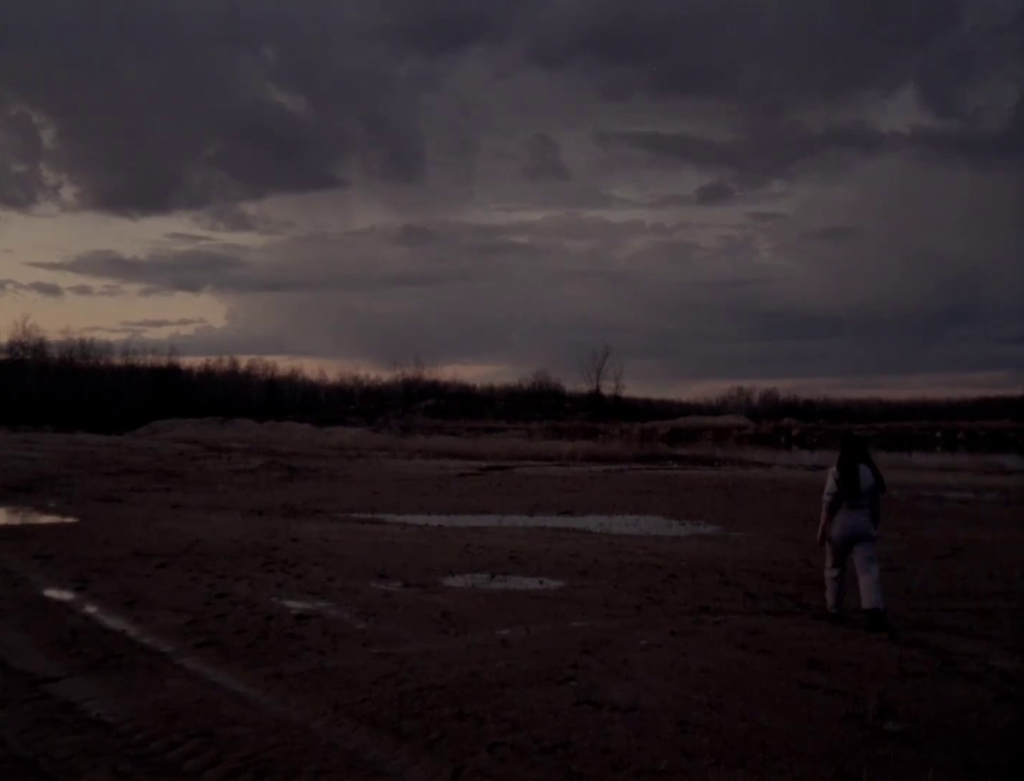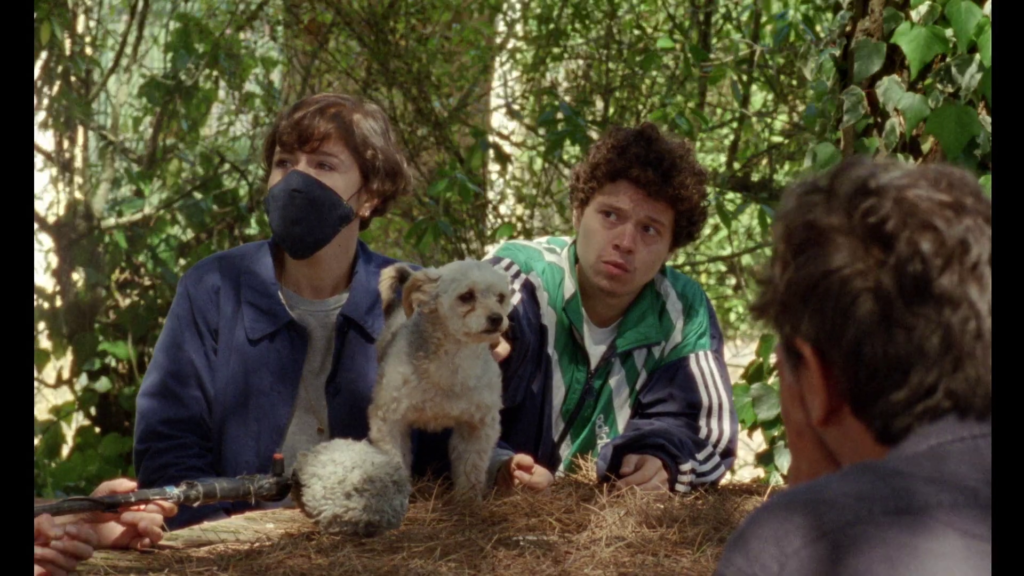
C’mon C’mon
Written and directed by Mike Mills. US, 2021, 108 minutes.
In Mike Mills’ third feature, Joaquin Phoenix stars as Johnny, radio journalist and soft-hearted uncle to precocious nine-year-old Jesse (Woody Norman). While Jesse’s mom (Gaby Hoffmann) is in LA dealing with the rehabilitation of her mentally ill husband Paul (Scoot McNairy), Johnny brings the kid on his cross-country radio tour, where he’s interviewing kids from diverse backgrounds about their thoughts on “the future.” That makes C’mon C’mon basically the black-and-white, arthouse indie version of Big Daddy (1999)—two films about wayward men whose bonding experience with a young child forces them to grow up and learn something life-changing about themselves. Not quite on par with the emotional tour de force of Mills’ prior features 20th Century Women (2016) and Beginners (2010), C’mon C’mon is still suffused with the filmmaker’s signature vulnerability and tenderness, deeply invested in the goodness of people without being overly optimistic or syrupy. He attests to fears of the future while remaining hopeful through real-life child subjects that speak for themselves, and gives one of our finest actors a rare leading role where he’s simply allowed to be a normal guy. [★★★1/2] —Brianna Zigler
Showing at the Brattle Theatre as part of the IFFBoston Fall Focus on Sunday, October 24 at 5pm (limited tickets available here). Scheduled for US theatrical distribution on November 18.

I Want to Talk About Duras
Written and directed by Claire Simon. France, 2021, 95 minutes.
Bluntly describing the concept of I Want to Talk About Duras probably suggests a boring experience. The film depicts a real 1982 interview between writer Yann Andréa (Swann Arlaud) and journalist Michèle Manceaux (Emmanuelle Devos) by staging its transcript at feature length in one room—the idea being that we only hear what the recorders actually captured, to such a degree that when the performers go off the record the film’s audio goes blank. For me that recalled the soundtrack drops in A Woman is a Woman (1961), which could be this film’s alternate title. The subject is the relationship between Andréa, who defines himself primarily as a gay man and a devoted follower of the French author/filmmaker Marguerite Duras, and Duras herself, who is about 40 years Andréa’s elder and described as being psychologically abusive towards both his sexual tendencies and his perceived intellectual shortcomings. I don’t know whether Simon has rewritten the original material, but watching I Want to Talk About Duras, you discover what presumably compelled her to produce this text to begin with—the transcripts, covering two distinct sessions that lend themselves perfectly to a bifurcated cinematic structure, are fraught with sexual tension, art-historical resonance, and even narrative drama. Andréa’s memories allow for countless reversals and reinterpretations on the dynamics between masters and followers (perhaps just doms and subs), which are contemplated within the contexts of art, culture, sex, work, and life at home, altogether establishing a thematic focus that I Want to Talk About Duras investigates comprehensively. Meanwhile Simon’s elegant compositions prize the performers’ bodies and faces in a manner that prevents all that dialogue from commanding a droning primacy, often finding endearing images that keep the senses active… this is the rare sort of film that allows you to become intimately familiar with, say, the glow created when sunlight through a window hits a specific wisp of hair, or the warm color left on a person’s face by the reflection off a particular lampshade. Which is not boring or slow but humane and in this case rather engrossing.
That the first interview session in I Want to Talk About Duras emphasizes the early period associated with tender memories while the second is dedicated to clearly traumatic grievances creates a dramatic curdling effect that only gains more power from the fact that Simon’s film is sourced from a nearly forgotten 40-year-old historical document and like nearly all other movies is surely fated to become one itself within the same timeframe. [★★★1/2] —Jake Mulligan
Showing virtually to all US viewers as part of the Indie Memphis Film Festival from October 22-24 (limited “unlocks” available here).

Red Rocket
Co-written and directed by Sean Baker. US, 2021, 128 minutes.
Sean Baker’s follow-up to The Florida Project (2017) will not make you feel warm and fuzzy inside, probably the exact opposite. I myself squirmed, recoiled, and clutched at my sides—from laughter, sheer abject horror, and unrestrained glee watching the series of half-assed, heinous decisions made by former porn star and hometown anti-hero Mikey Saber (Simon Rex). When Mikey returns to his small Texas town after washing up in the LA porn scene, he’s met with less than warm welcomes from his estranged wife, people from high school, and the other locals who know him as the guy who left for bigger and better things. Though he appears determined to make it right, he’s also not determined at all, because Saber is a conman first and a parasite second, a scumbag brimming with enough charisma to weasel his way into folks’ good graces and suck them dry like a vampire. In Mikey Saber, a man perpetually indifferent to bettering himself in ways not immediately gratifying, Baker has found the best protagonist since Adam Sandler’s Howard Ratner. Red Rocket is a thorny film about a degenerate man and it is destined to make the worst people angry—people who engage with narrative art on a superficial, sliding scale of good or bad that’s based on how problematic the lead character is. [★★★★1/2] —Brianna Zigler
Showing at the Brattle Theatre as part of the IFFBoston Fall Focus on Thursday, October 22 at 7:30pm (very limited tickets available here). Scheduled for US theatrical distribution on December 3.

Ste. Anne
Written and directed by Rhayne Vermette. Canada, 2021, 80 minutes.
This 16mm Manitoban import is the first feature by experimental filmmaker Rhayne Vermette, who collaborated with the indigenous Metis community of the Treaty 1 Territory to bring together an evocative, meditative, and observant film of a time and place. The plot is focused on a young woman Renee (Vermette) who returns home from an undisclosed absence to retake the role of being a mother to her young daughter. While Wim Wenders’ Paris, Texas (1984) has been a popular point of comparison in terms of plot, Ste. Anne is best when it leans into the points of abstraction that underscores the central character’s sense—at times lost—of belonging to her hometown, her family, and the binding, mysterious histories of both. The exteriors of vast prairies in twilight are striking and hit on the feeling of isolation and being out of time with the rest of the modern world. Celluloid lives in Ste. Anne as a flickering, fracturing instrument that adds an aura and spirit to a beautiful collage and memory play. Vermette is a talent to watch. [★★★1/2] —Caden Mark Gardner
See rhaynevermette.com for information on future screenings.

The Tsugua Diaries
Co-written and directed by Maureen Fazendeiro and Miguel Gomes. Portugal, 2021, 102 minutes.
Portuguese auteur Miguel Gomes’ return to filmmaking after his brilliant Arabian Nights trilogy (2015) was not supposed to happen this way. He’d been working on several projects that all got interrupted by the pandemic—but with that came this film informed by the pandemic, co-directed by his wife and collaborator Maureen Fazendeiro. The Tsugua Diaries is pared down, produced by a crew and a cast of three (that include Gomes veterans Carloto Cotta and Crista Alfaiate), and—as if to show the fogginess of what this pandemic wrought with time—is told in chapters that play in reverse chronology. The results are less immediately subversive compared to how his Tabu (2012) and Arabian Nights played with colonialism, the past, and canonical texts. But as always Gomes’ ear for a music needle drop pays immense dividends, here with Frankie Valli & The Four Seasons’ late period song “The Night”. The Tsugua Diaries feels in the lineage of exasperating and laborious efforts including William Greaves’ Symbiopsychotaxiplasm: Take One (1968), Fassbinder’s Beware of a Holy Whore (1970), and Norman Mailer’s Maidstone (1971)—films that are transparent about their hybrid and improvisatory natures, and held together by fascinating structural conceits that owe as much to literature as to filmmaking. It captures the ecstasy, freedom, and impulses tied to the creative process, albeit one enclosed in a small space that could fold at a moment’s notice. Gomes and Fazendeiro see the tension of a chaotic world on the periphery, with grace and remarkable ingenuity. [★★★★1/2] —Caden Mark Gardner
Scheduled for US distribution, no date yet.
Dig Staff means this article was a collaborative effort. Teamwork, as we like to call it.

